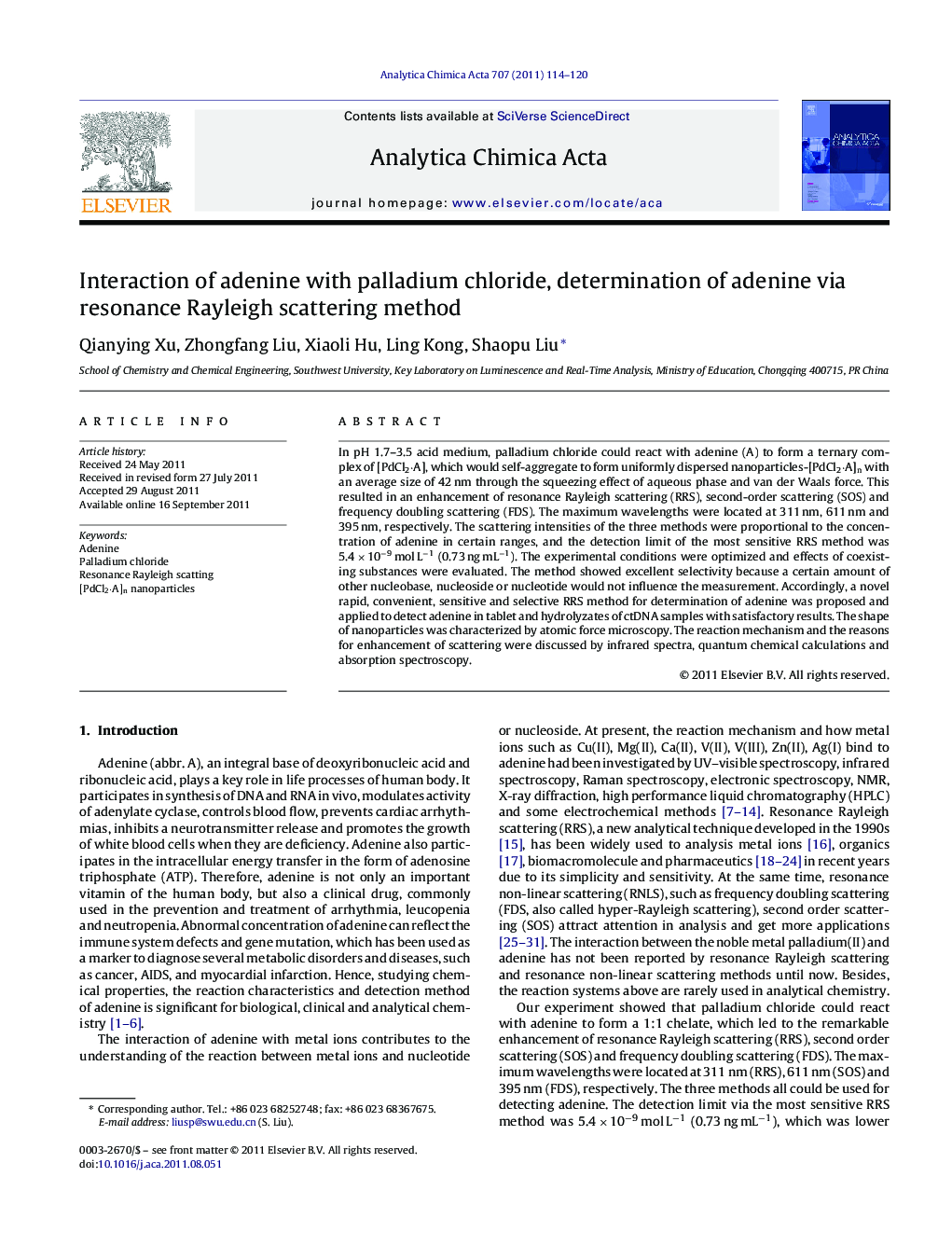| Article ID | Journal | Published Year | Pages | File Type |
|---|---|---|---|---|
| 1166530 | Analytica Chimica Acta | 2011 | 7 Pages |
In pH 1.7–3.5 acid medium, palladium chloride could react with adenine (A) to form a ternary complex of [PdCl2·A], which would self-aggregate to form uniformly dispersed nanoparticles-[PdCl2·A]n with an average size of 42 nm through the squeezing effect of aqueous phase and van der Waals force. This resulted in an enhancement of resonance Rayleigh scattering (RRS), second-order scattering (SOS) and frequency doubling scattering (FDS). The maximum wavelengths were located at 311 nm, 611 nm and 395 nm, respectively. The scattering intensities of the three methods were proportional to the concentration of adenine in certain ranges, and the detection limit of the most sensitive RRS method was 5.4 × 10−9 mol L−1 (0.73 ng mL−1). The experimental conditions were optimized and effects of coexisting substances were evaluated. The method showed excellent selectivity because a certain amount of other nucleobase, nucleoside or nucleotide would not influence the measurement. Accordingly, a novel rapid, convenient, sensitive and selective RRS method for determination of adenine was proposed and applied to detect adenine in tablet and hydrolyzates of ctDNA samples with satisfactory results. The shape of nanoparticles was characterized by atomic force microscopy. The reaction mechanism and the reasons for enhancement of scattering were discussed by infrared spectra, quantum chemical calculations and absorption spectroscopy.
Graphical abstractPalladium chloride could react with adenine to form a 1:1 chelate, which led to the remarkable enhancement of resonance Rayleigh scattering (RRS) with the peak at 311 nm. The enhanced intensities present a good linear relationship with the concentration of adenine, which suggests that the system can be used for the quantitative determination of adenine.Figure optionsDownload full-size imageDownload as PowerPoint slideHighlights► This method is sensitive, the detection limit for adenine is 5.4 × 10−9 mol L−1. ► Other nucleobases have no similar reaction, the method has high selectivity. ► The interaction are characterized by many methods.
